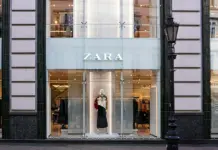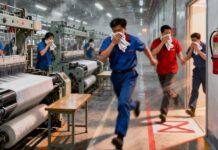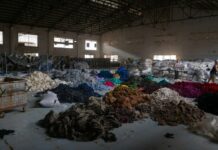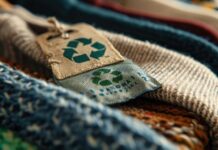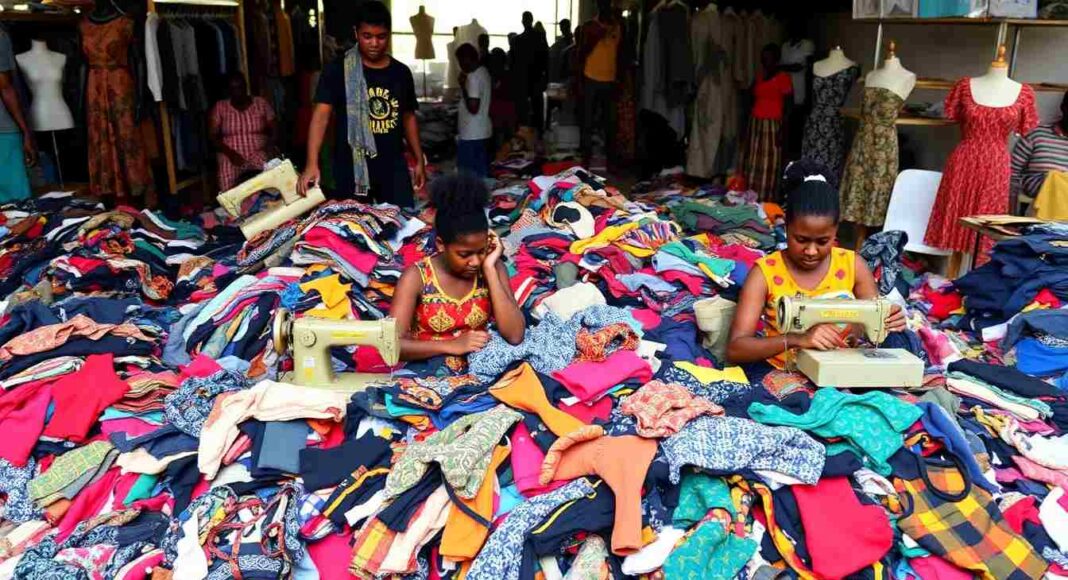Ghana is experiencing a textile waste crisis that reflects the environmental and social consequences of global fast fashion. As the nation contends with the influx of second-hand clothing and the resultant garbage, the inquiry arises: can revitalising indigenous fashion initiatives resolve Ghana’s textile waste crisis? Kantamanto Market in Accra, one of the world’s largest second-hand clothing marketplaces, receives about 15 million articles of second-hand clothing weekly, resulting in an immense volume of textile waste that jeopardises both the environment and the livelihoods of local residents.
This dilemma has its roots in decades of reliance on imported used clothing, which is more commonly known locally as “obroni wawu” or “dead white man’s clothes.” Approximately 40% of these imports are deemed unsellable, creating a massive garbage load that degrades ecosystems and fills landfills to capacity. Amid this urgent issue, indigenous fashion solutions, upcycling, and community-driven innovation are emerging as feasible pathways to sustainability and economic revitalisation.
The Magnitude of Ghana’s Textile Waste Crisis
Ghana’s textile waste problem is a result of both domestic consumption habits and international fast fashion trends. Kantamanto Market, one of the largest second-hand clothing markets in the country, sorts through enormous amounts of clothing on a weekly basis. Analyst News indicates that almost 40% of these garments are rejected for being defective or low-quality, creating a staggering amount of waste. It is not only an environmental risk but also a socioeconomic one since it contributes to overloading the local waste disposal systems and disproportionately impacts underserved communities.
The environmental cost of the waste is high. Most of the unsalable garments, predominantly made of synthetic fibers, are resistant to natural breakdown and form microplastic contamination in Ghana’s oceans and rivers. Air and soil pollution caused by incinerating rejected cloth add to the harm, producing what Greenpeace has referred to as “plastic beaches” along coastal areas. Of particular concern is that the toxicity of the waste, including carcinogenic contaminants, risks biodiversity and public health equally.
Reviving Local Fashion as a Sustainable Solution
In the midst of this crisis, the most promising solution is reviving Ghana’s previously booming local fashion industry. Prior to second-hand imports flooding the market, Ghana had a thriving textile industry marked by traditional craftsmanship and community-centered production. To revive this heritage provides a two-pronged opportunity to remedy the waste issue as well as promote economic resilience.
Local efforts like The Revival, which was co-founded by Ghanaian fashion designer Yayra Agbofah, are leading the way in upcycling textile waste to produce worthwhile products. Through the conversion of discarded textiles into sellable clothing and accessories, The Revival minimizes waste and creates employment opportunities in the community. Its collaboration with international bodies has maximized its impact, proving the feasibility of scaling such efforts.
Additionally, the re-emergence of local fashion would stimulate the demand for the use of traditional Ghanaian textiles, including kente and batik, which are not only environmentally friendly but also culturally meaningful. Encouraging local artisans and small producers would trigger domestic production, lower the dependency on imports, and facilitate a circular economy where materials are recycled instead of wasted.
Upcycling and Circular Economy Practices
Upcycling is becoming a pillar of initiatives to address the issue of Ghana’s textile waste crisis. In contrast to recycling, which tends to be energy-hungry processes breaking down materials into raw materials, upcycling preserves and adds value to discarded items. By imagining new uses for unsellable clothes, upcycling supports both environmental and economic objectives.
Companies such as The Revival are seeking means to incorporate textile waste into more comprehensive solutions, including industrial materials or insulation products. These initiatives showcase the potential for wastage to be creatively reused while serving utility purposes. In addition, upcycling encourages local involvement, empowering entrepreneurs and local artisans to engage in sustainable practices.
The circular economy approach, which involves designing out waste and keeping materials in use, presents a realistic solution to Ghana’s textile waste crisis. By investing in recycling technologies locally and stimulating innovation, Ghana may turn its textile industry into an eco-friendly system. Incentivizing upcycling firms, along with awareness campaigns, can transform consumer behavior and decrease the demand for low-quality foreign-made products.
Addressing Ethical and Environmental Concerns
Reviving local fashion solutions must also tackle the ethical and environmental aspects of the textile crisis in Ghana. The existing model of sending second-hand clothing from the developed world to the Global South has also been characterized as wasting colonialism, where developing nations bear the disproportionate environmental costs of overconsumption.
Policies need to be advanced to control the importation of second-hand garments. Improved quality requirements and restrictions on unwanted goods could curb the dumping of wastes while stimulating local manufacturing. Simultaneously, developing international accountability is necessary to make fast fashion companies responsible for the role their business plays in global textile waste.
Local solutions also need to emphasize environmental sustainability. The employment of natural and biodegradable materials, water-efficient dyeing processes, and energy generated through renewable sources in production methods can reduce the industry’s ecological impact. Investment in waste management systems, especially in urban cities such as Accra, is also essential to prevent the short-term effects of textile waste.
Education and Community Engagement
Education and public engagement are critical to the success of local fashion solutions. Increasing awareness of the environmental and social implications of textile waste can enable consumers to make informed decisions. Initiatives that promote Ghana’s rich textile history, including workshops and exhibitions, can enhance pride in locally-made products and redirect preference from imported fast fashion.
Working in concert with government, non-governmental organizations, and local enterprises is crucial to a collective push toward sustainability. Educational programs for novice designers and artisans might prepare them with the skills to innovate ethically, combining traditional methods with contemporary sustainable protocols.
In addition, the incorporation of sustainability into curricula could give rise to a generation of environmentally aware producers and consumers. By infusing environmental consciousness into the fabric of Ghanaian culture, the nation can establish a robust foundation for sustainable change.
The Economic Potential of Local Fashion
Reviving local fashion solutions is not merely a solution to Ghana’s textile waste crisis but also an avenue for economic development. Fashion can bring in a lot of revenue and create employment opportunities, particularly for women and youth who are usually underrepresented in the formal sector.
Assisting small and medium-sized enterprises (SMEs) in the fashion industry may promote economic growth and poverty reduction. By providing financial incentives, grants, and subsidies, the government may enhance the capacity of local businesses to expand operations and compete globally.
In addition, the fashion sector in Ghana could use online platforms to access world markets, presenting the world with the creativity and workmanship of their artisans. Social media and e-commerce have the potential to link Ghanaian fashion designers with global consumers, opening up new income streams and projecting the nation’s cultural profile.
Conclusion
The question of whether revamping local fashion solutions can cure Ghana’s textile waste crisis is a symptom of a greater challenge of sustainability in a globalized world. Though the problem is rooted in global fast fashion, the solutions lie in local ingenuity, community resilience, and collaborative efforts to create a sustainable future.
Ghana can transform its textile waste problem into a renewable resource by prioritising local manufacture, upcycling, and circular economy concepts. The rehabilitation of ancient processes and materials has the potential to lessen environmental impact while simultaneously restoring cultural pride and economic vigour.
Ghana’s journey exemplifies how communities may reclaim control of their resources and reinvent sustainability on their own terms. Restoring indigenous fashion solutions is more than a reaction to a crisis; it is a declaration of the power of innovation, collaboration, and a commitment to a better tomorrow.






